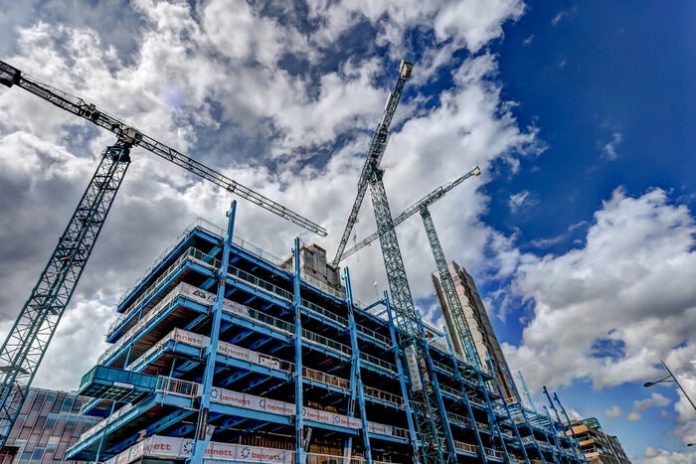Like numerous other sectors, the construction industry took a heavy blow by the outbreak of the COVID-19 pandemic. Now that this trial finally seems like it’s coming to a close the construction industry is once again showing signs of life. During the previous years, the sector scored a noteworthy growth of 5.7% on a global level. If the year passes without new health emergencies, this trend should continue throughout 2022.
Of course, this newfound momentum of the global construction industry also comes with a built-in set of entirely new trends that are dictated by the contemporary social and business environment. So, let us take a look then at some of the most important disruptive developments you should keep a close eye on to make sure your company is able to deal with all the challenges in the year ahead.
The emergence of smart, connected cities
This development has been on the table for quite some time, but as sustainability remains one of the imperatives of modern society, it is becoming evident that these needs can be met only by taking the experience we had with the IoT and expanding it on a city-wide scale. This trend will also translate to tangible numbers. The market size of the smart city industry is expected to double from the present $410.8 billion to $820.7 billion by 2025. The companies that want to tap into this developing market will need to build tech infrastructure that will comply with the tendencies of this digitally-driven sector.
The skill gap is becoming a real problem
For quite some time now, the construction industry has been experiencing a labor shortage that kept the entire sector from reaching its full potential. Now, when the COVID-19 additionally disturbed the sector and obstructed the training of new workers, the issue only becomes more evident. If we take the UK as an example of a developed country we can see this European giant experiences a training deficit as sharp as 51%. These numbers can be translated to other economies as well. Alex Fopiano believes that is why construction companies need to put extra effort into scouting, training and creating an inviting work environment.
Greater need for workflow automation
This trend can be traced to two sources. First, the construction industry is becoming growingly complex and requires a greater level of attention and control at every individual facet of one company. With that in mind, it is no wonder we are seeing the rise of products like professional construction equipment fleet management software and similar tools designed for tackling these specific purposes. Furthermore, the companies that use workflow automation are able to achieve a much higher level of efficiency and grow to be more competitive in the process. That makes workflow automation a necessity rather than an option.
Digitalization speeds up the industry
Over the last couple of years, we have experienced lightning-fast development of technologies like IoT, cloud computing, robotics, and communication. All these goods, if implemented correctly, can raise the efficiency of the construction industry on an unprecedented level. That will inevitably change how we think about the construction in the long term at least in terms of schedules, project timelines, and relevant KPIs. The signs of this development will be observable as early as 2022 forcing the companies that took the more traditional route to put more resources in their IT departments and digital transformation.
Offsite construction growing in relevance
The modern business world and society, in general, are making big steps in the direction of sustainability and reducing the environmental impact. Putting a greater emphasis on the prefabricated constructions that are only assembled at the worksite, the construction industry makes a very strong contributor to this movement. Speaking in cold numbers, the prefab construction market is expected to undergo a growth from $130,409.1 million in 2020 to $235,467.6 million by 2030. This niche construction sector could give smaller and medium companies a leveled field where they can compete with bigger industry players.
3D printing finally becoming a thing
The idea of 3D printing has been with us ever since the 80s it looks like the promise of this exciting tech will finally be fulfilled in the near future. Of course, the printed materials, tools, and even a couple of prefab buildings have been circling the fringes of the industry for quite some time now. Now, though, that the 82 printed houses located in California have been sold virtually overnight with a waiting list of more than 1,000 people the idea of 3D printing finally seems viable enough to become a relevant factor in the industry. The present-day sustainable sentiments can only make sure these predictions are true.
We hope these few mentions gave you some general idea about the direction in which the construction sector will be heading throughout 2022. Now that the shackles produced by the outbreak of COVID-19 are finally becoming loose, the construction industry should experience a small renaissance pushing past even the pre-pandemic numbers. Such sudden growth always entails new and exciting trends you should keep on your radar if you want to make your company competitive. These few examples are an excellent place to start.





























![“Does Everyone Hear Me OK?”: How to Lead Virtual Teams Effectively iStock-1438575049 (1) [Converted]](https://www.europeanbusinessreview.com/wp-content/uploads/2024/11/iStock-1438575049-1-Converted-100x70.jpg)




